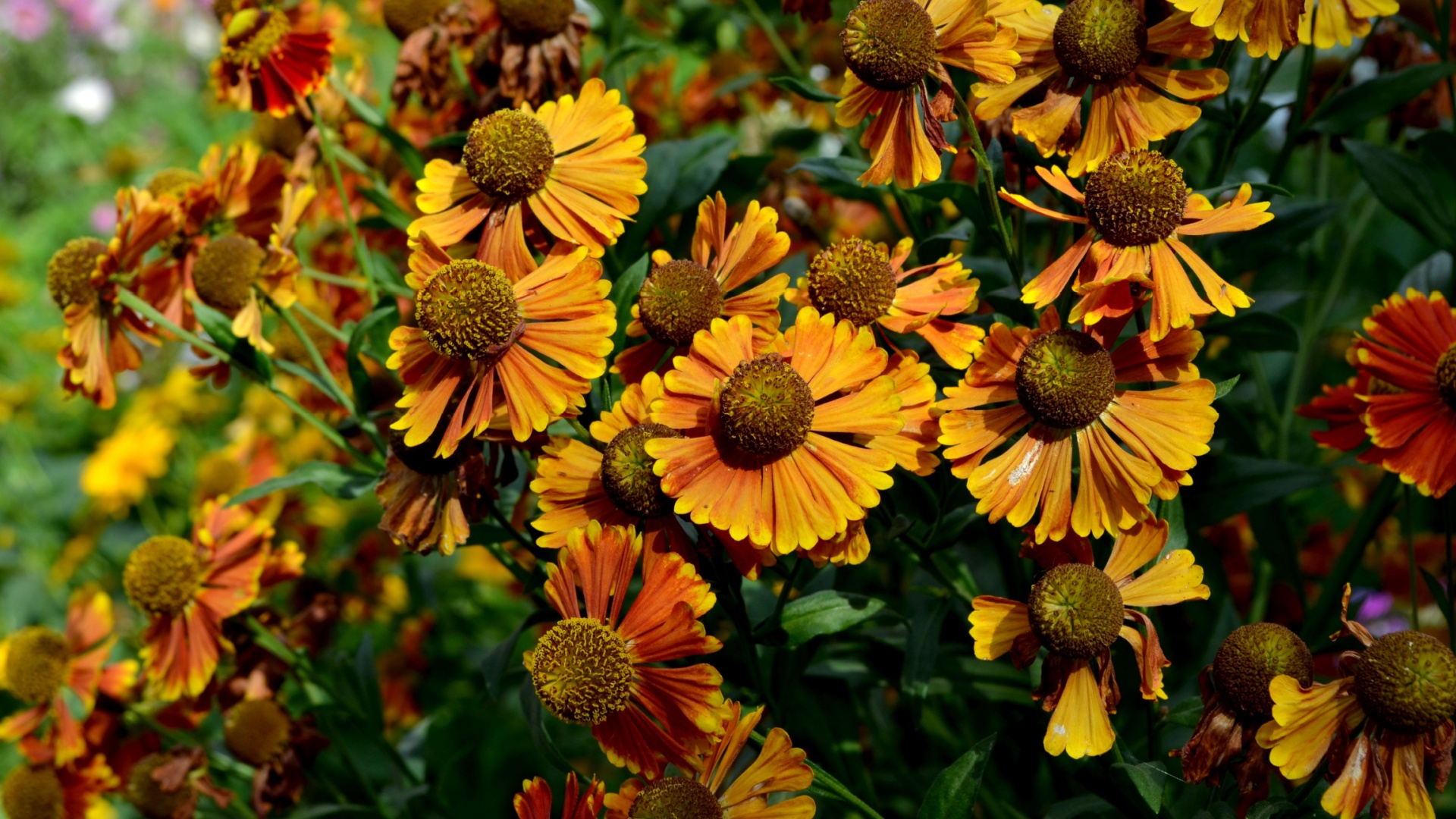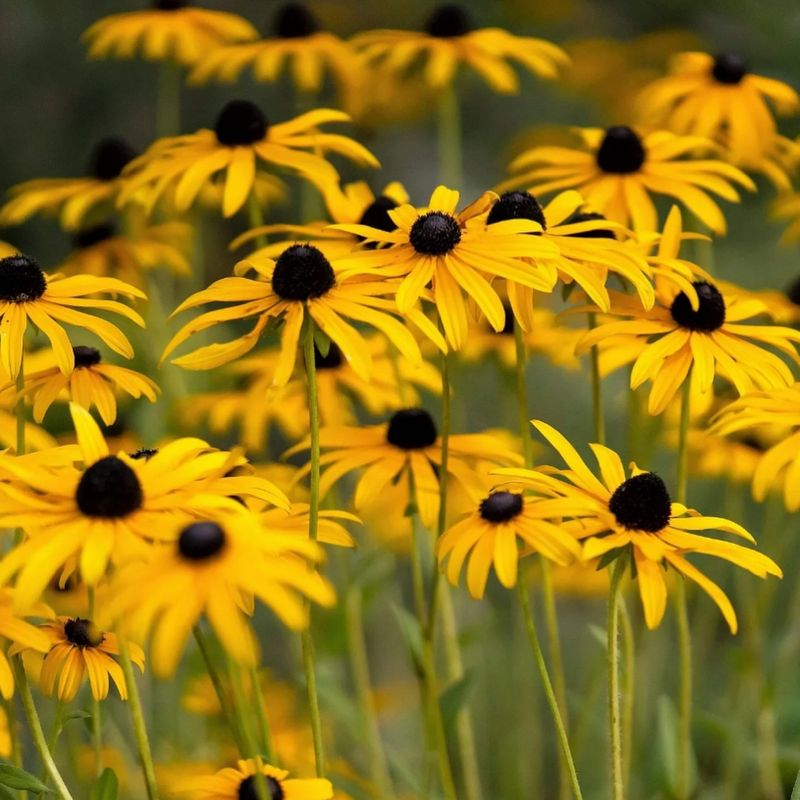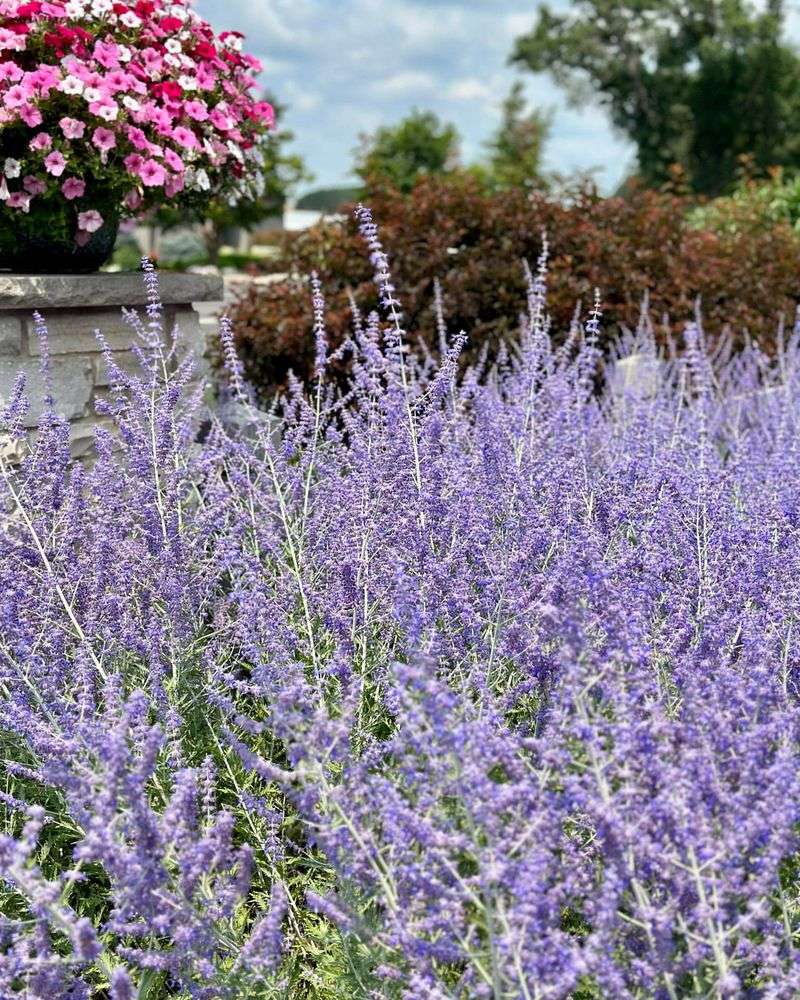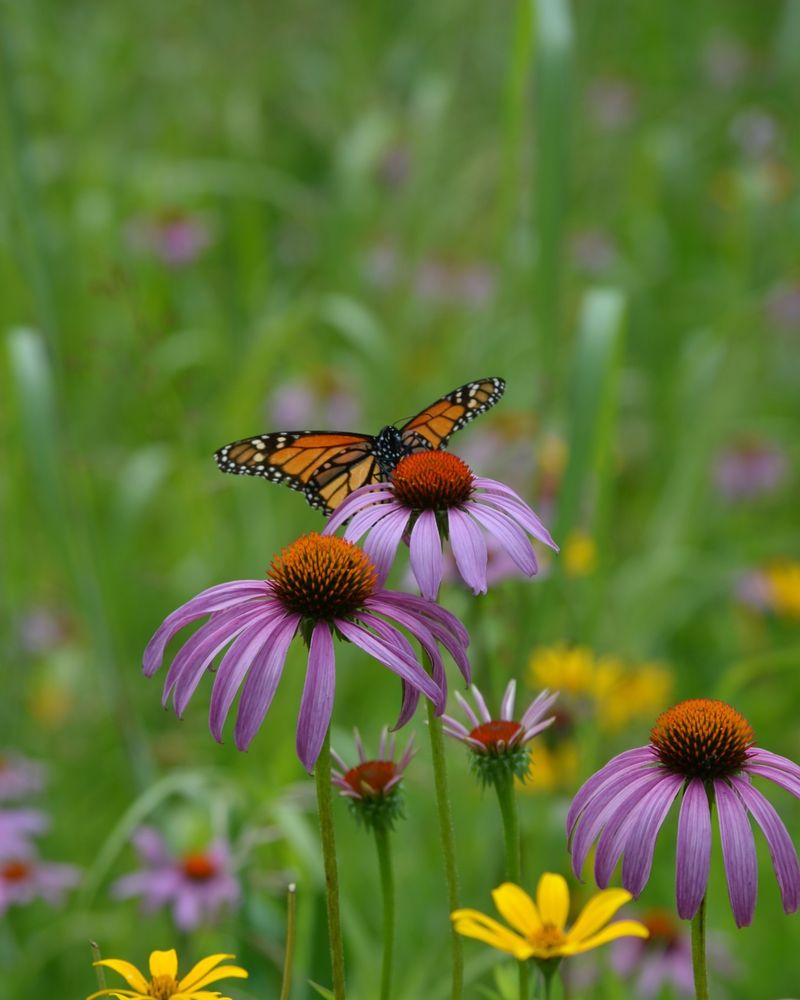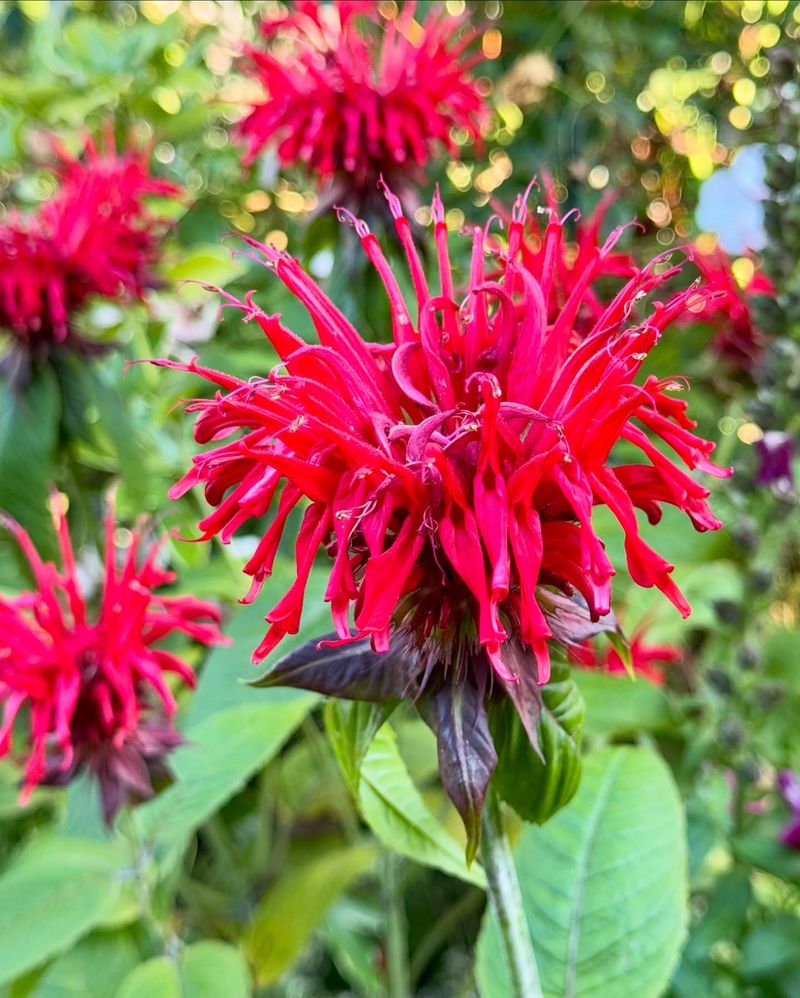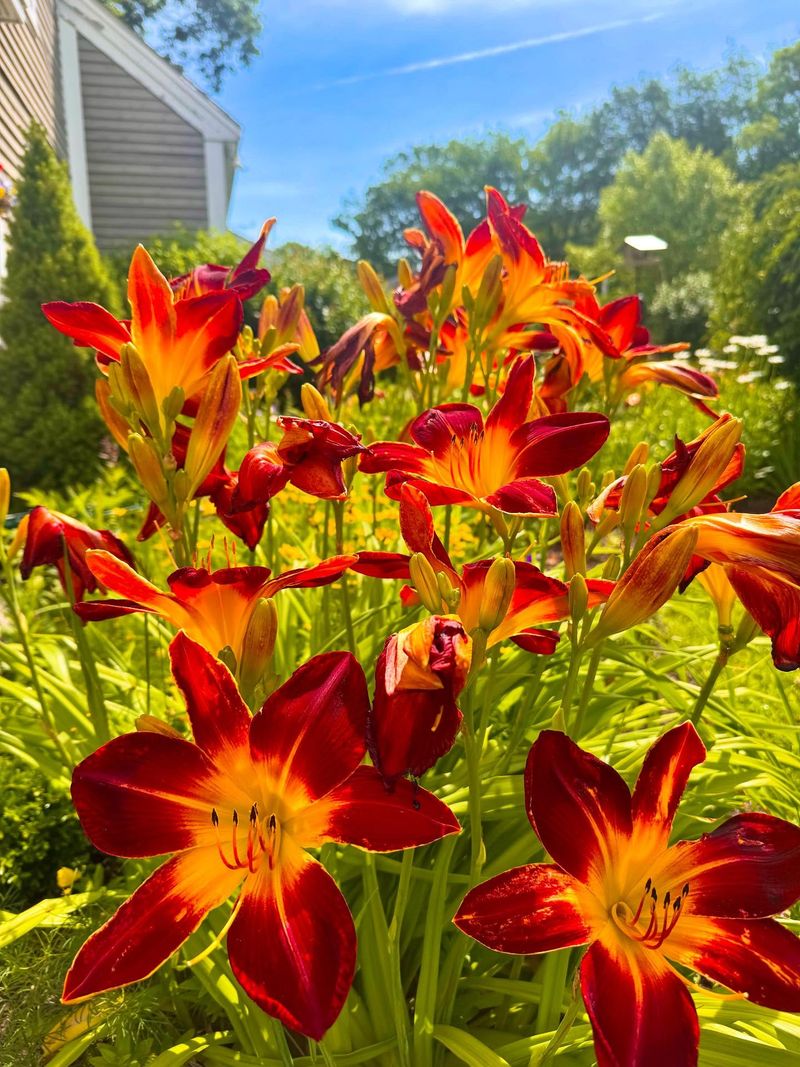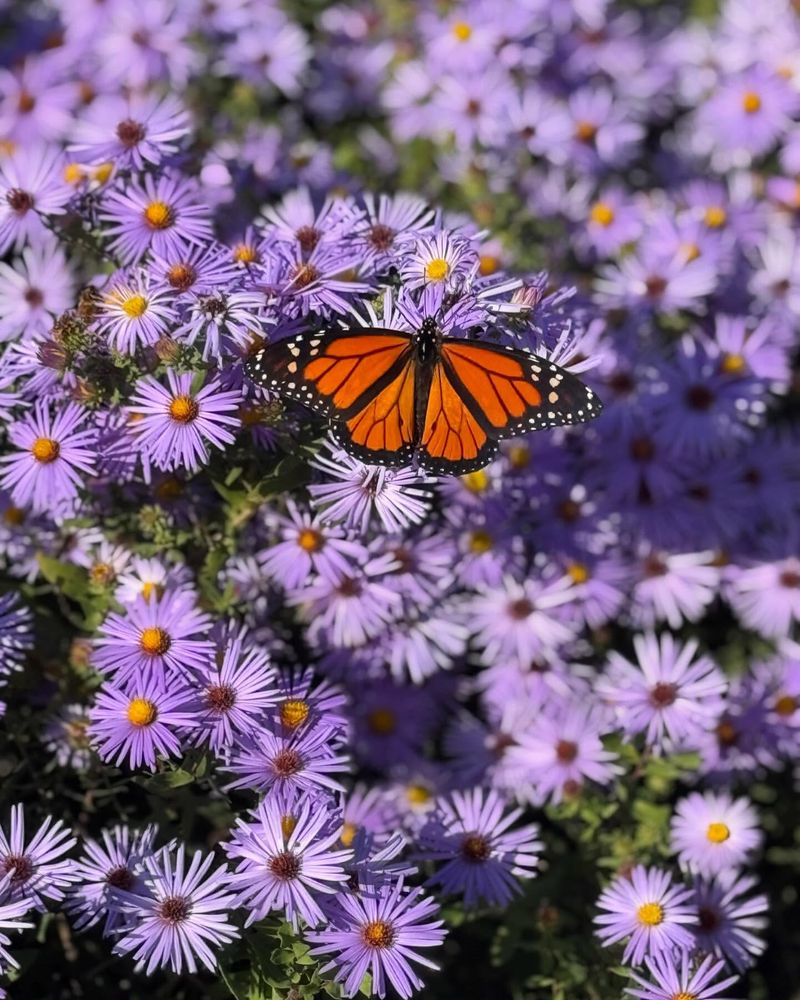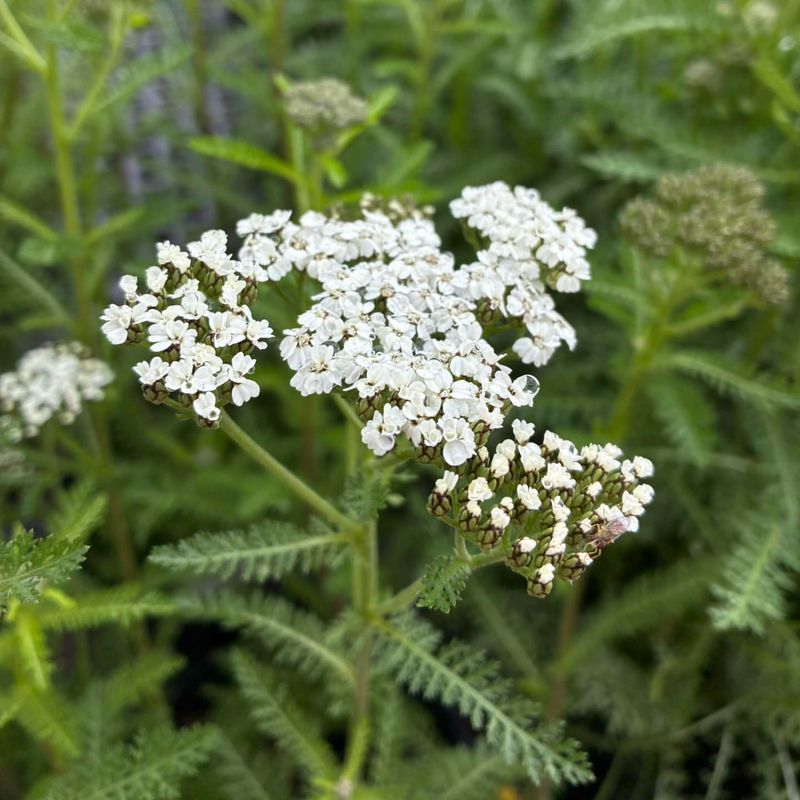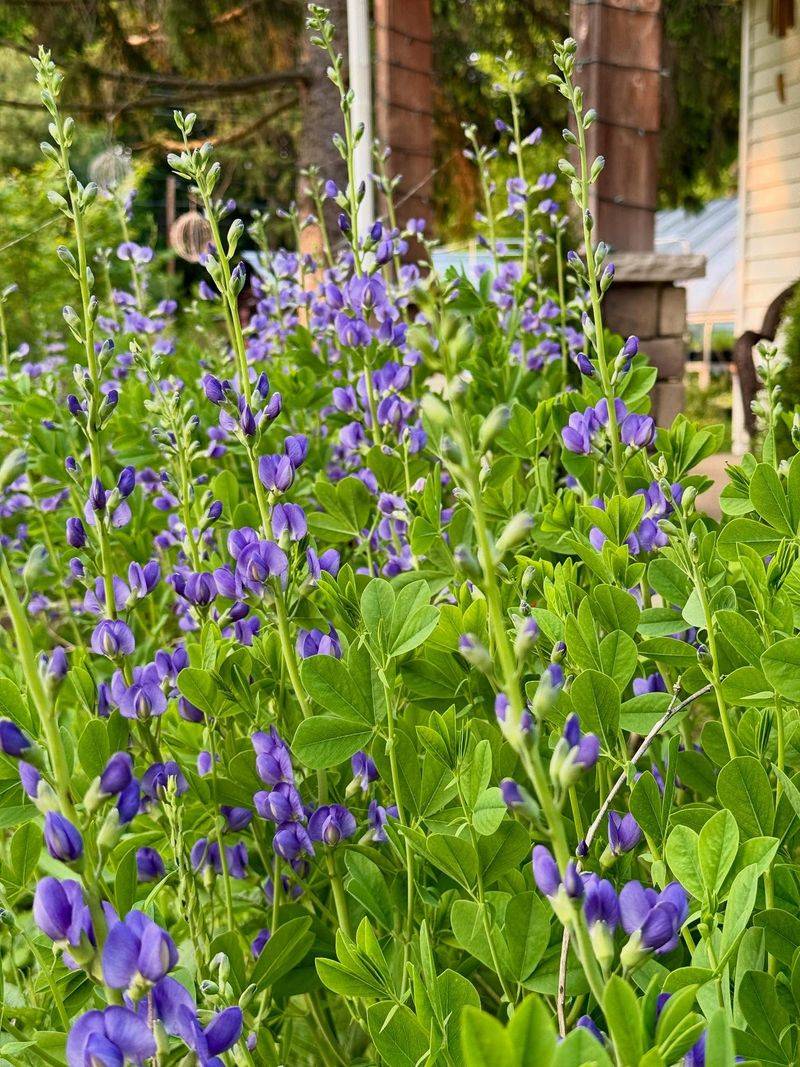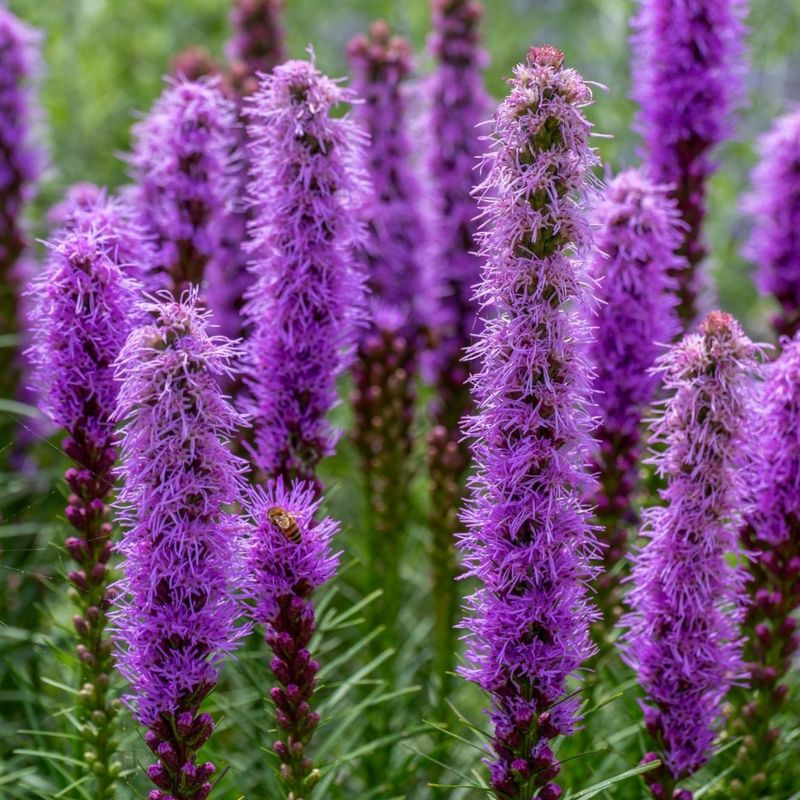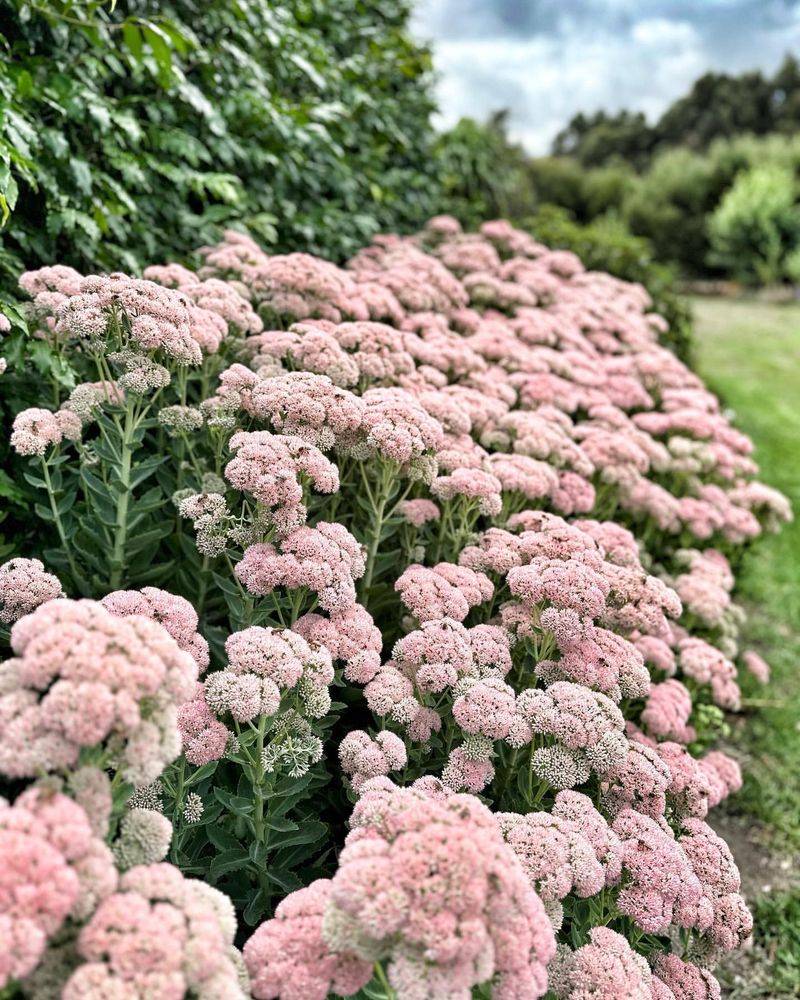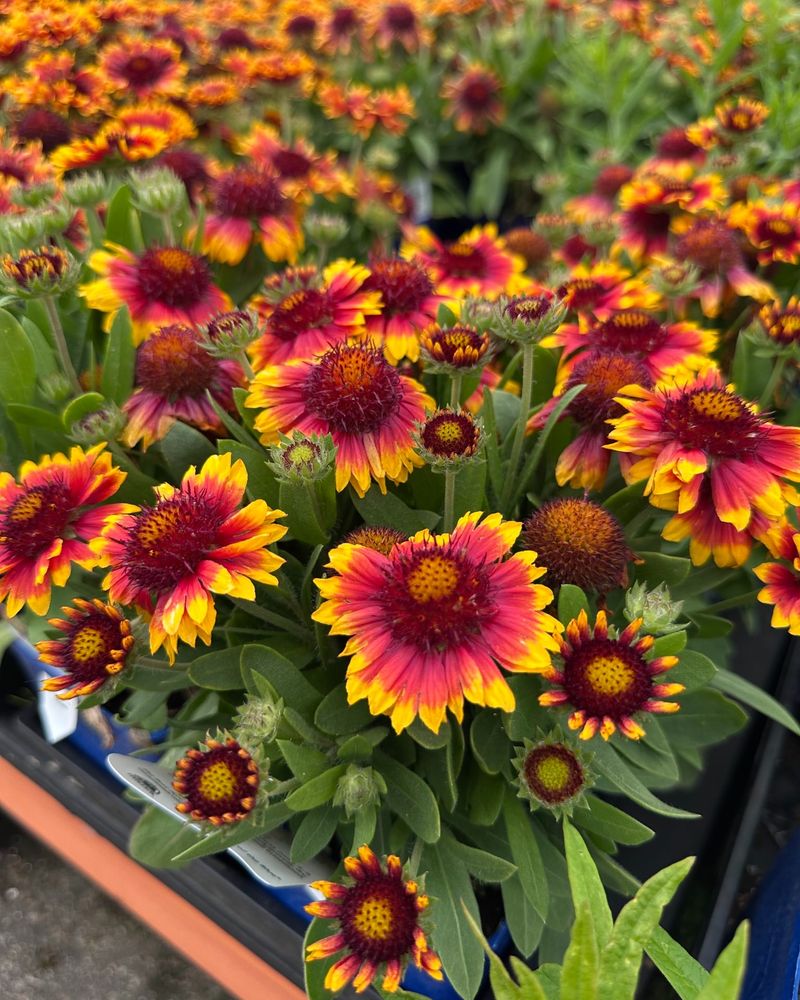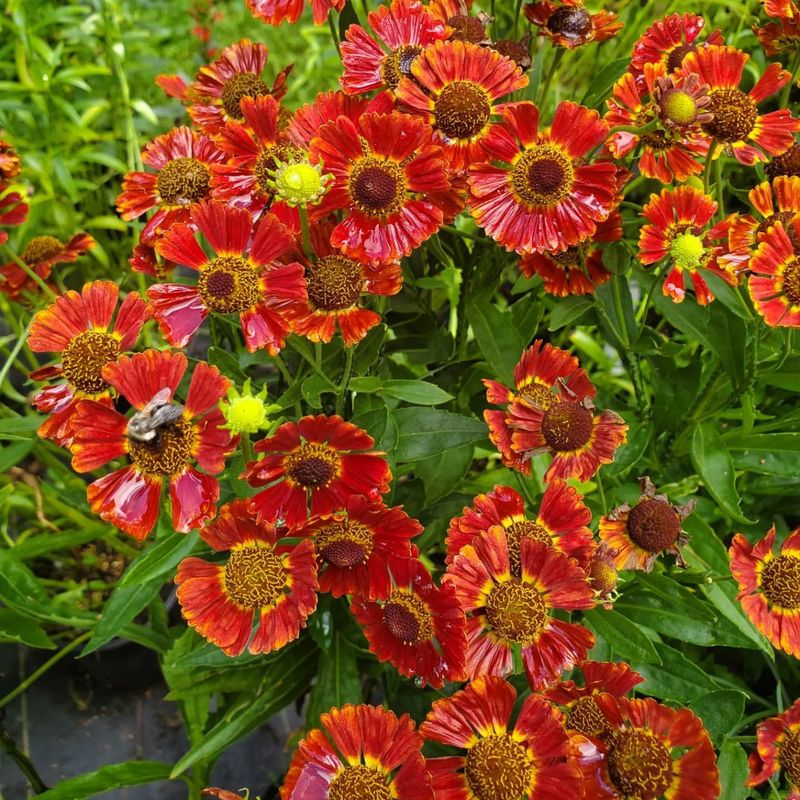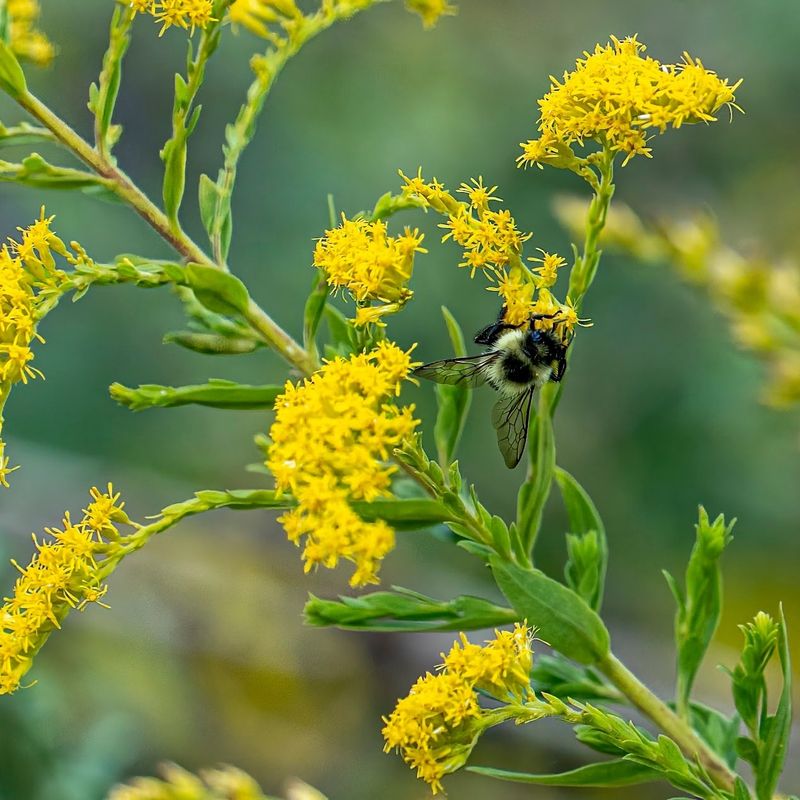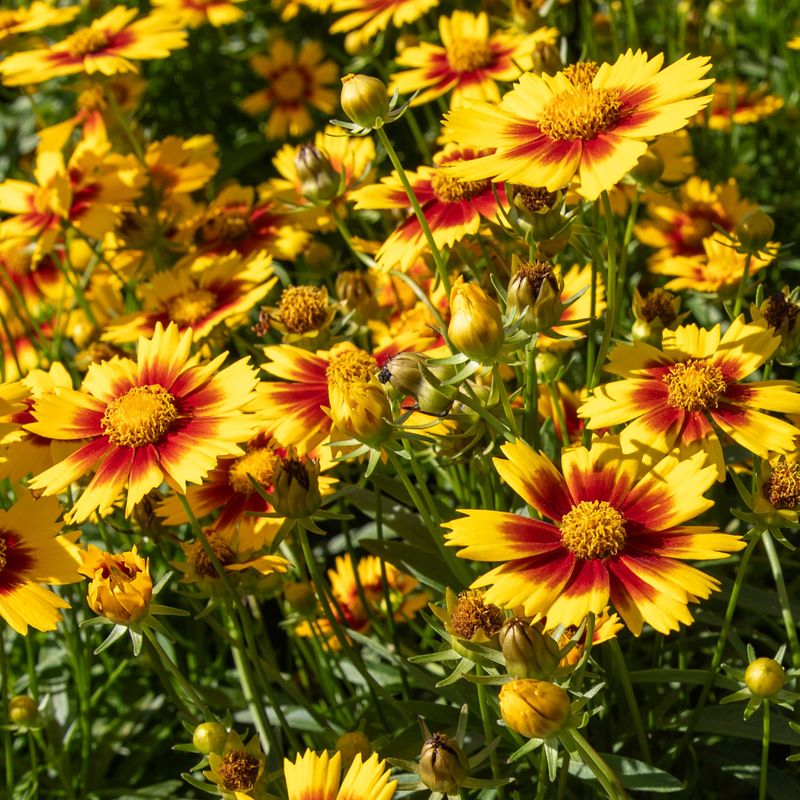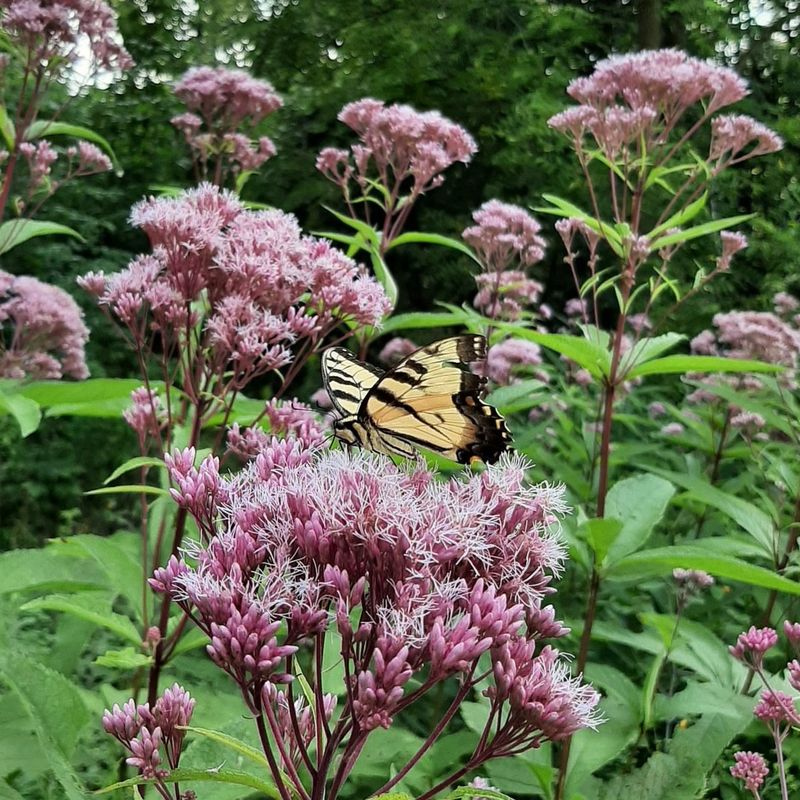Clay soil can be tough on plants—but the right flowers don’t just survive in it, they thrive. With their strong roots and adaptable nature, these blooms break through dense soil, add vibrant color, and bring pollinators to even the stickiest garden beds.
No soil amendments? No problem. These flowers are built for the challenge.
1. Black-Eyed Susan
Golden petals surrounding dark centers make Black-Eyed Susans stand out in any garden landscape. Their sturdy roots power through clay soil with remarkable determination.
Plant these native wildflowers in full sun for best results. They’ll reward you with months of blooms from midsummer through fall, attracting butterflies and birds to your garden.
Once established, they’re incredibly drought-tolerant and will self-seed, creating natural colonies that return year after year.
2. Russian Sage
Airy spires of lavender-blue flowers atop silvery foliage create a magical effect in summer gardens. Russian sage laughs at clay soil, poor conditions, and even drought once established.
Growing up to 4 feet tall, this perennial makes a stunning backdrop for shorter flowers. The aromatic leaves deter deer and rabbits while attracting beneficial pollinators.
For best results, plant in a sunny spot and give it room to spread its wings.
3. Coneflower (Echinacea)
Tough as nails yet beautiful as can be, coneflowers break through clay soil with their strong root systems. The distinctive raised centers surrounded by drooping petals come in purples, pinks, whites, and even yellows.
Beyond their good looks, these native perennials serve as medicine cabinets for butterflies and birds. The seed heads provide winter interest and food for finches.
Plant in full sun to part shade for years of reliable, low-maintenance color.
4. Bee Balm (Monarda)
Shaggy, crown-like flowers in vibrant reds, pinks, and purples make bee balm a showstopper in summer gardens. Despite clay soil’s challenges, this native perennial spreads happily via underground runners.
Hummingbirds can’t resist the tubular flowers, while butterflies and bees crowd around for the sweet nectar. The aromatic leaves smell minty when crushed and can be used for tea.
Give bee balm room to spread in a sunny to partly shaded spot.
5. Daylily
Virtually indestructible, daylilies muscle through clay soil with their thick, fleshy roots. Each flower lasts just one day – hence the name – but plants produce buds in succession for weeks of color.
Modern varieties come in nearly every color except true blue, with fascinating patterns, ruffles, and forms. Some even rebloom throughout the season.
Plant daylilies in full sun to light shade, and divide clumps every few years to maintain vigor and flowering.
6. Aster
Fall gardens burst with new life when asters unfurl their daisy-like blooms in purples, pinks, and whites. Their fibrous root systems navigate clay soil with ease, establishing strong colonies over time.
Migrating monarchs and other late-season butterflies depend on asters for crucial nectar. Native varieties support local ecosystems better than Asian imports.
Plant in full sun to part shade, and pinch back stems before July to encourage bushier growth and more flowers.
7. Yarrow
Flat-topped clusters of tiny flowers create landing pads for butterflies and beneficial insects. Yarrow’s feathery foliage adds texture to gardens while its tough roots power through clay without complaint.
Traditional white yarrow has been joined by yellows, pinks, reds, and peachy tones in modern gardens. All share the same drought tolerance and long-lasting blooms.
Cut flowers for arrangements or dry the blooms for everlasting bouquets – yarrow excels at both!
8. Baptisia (False Indigo)
Resembling lupines but much more tolerant of clay, Baptisia sends down deep taproots that break through tough soil. The blue-purple, yellow, or white pea-like flowers rise above blue-green foliage in late spring.
After flowering, interesting seed pods develop, rattling in the breeze and providing winter interest. Modern hybrids offer improved colors and more compact growth habits.
Plant where it can remain undisturbed – Baptisia resents being moved once established.
9. Liatris (Blazing Star)
Fluffy purple spikes that bloom from top to bottom (unlike most flowers) make Liatris a conversation starter. Their corm-like roots easily penetrate clay soil, especially when planted in fall.
Monarchs and other butterflies flock to the nectar-rich blooms in mid to late summer. The unusual blooming pattern provides weeks of interest as the flowers open gradually down each stem.
Plant in full sun for strongest stems that won’t require staking.
10. Sedum ‘Autumn Joy’
Succulent foliage topped with broccoli-like flower heads that change from green to pink to rusty red as fall progresses. Despite its fleshy leaves, ‘Autumn Joy’ handles clay soil with surprising grace.
Bees and butterflies swarm the flat-topped blooms during late summer when many other flowers have faded. The dried flower heads provide winter interest and can remain standing until spring cleanup.
Plant in full sun for strongest stems and most vibrant flower color.
11. Blanket Flower (Gaillardia)
Cheerful daisy-like blooms in fiery reds, oranges, and yellows light up gardens from early summer until frost. The taproots of blanket flowers allow them to thrive in clay soil where other plants struggle.
Native to American prairies, these tough perennials laugh at heat, drought, and poor soil conditions. Deadheading spent blooms encourages continuous flowering throughout the season.
Plant in full sun and provide good drainage for longest life – even in clay soil.
12. Helenium (Sneezeweed)
Late-summer gardens come alive with Helenium’s daisy-like flowers in rich autumnal hues of gold, orange, red, and mahogany. Despite the name, these flowers won’t make you sneeze – the common name comes from historical use of the dried leaves as snuff.
Butterflies adore the nectar-rich blooms while the sturdy roots handle clay soil with ease. Newer varieties stay compact without staking.
Plant in full sun and keep soil consistently moist for best performance.
13. Goldenrod (Solidago)
Fountains of tiny golden flowers create a spectacular late-season display that clay soil can’t suppress. Contrary to popular belief, goldenrod doesn’t cause hay fever – it’s wind-pollinated ragweed blooming at the same time that’s the culprit.
Newer garden varieties stay more compact than their wild cousins. All provide crucial late-season nectar for butterflies and bees preparing for winter.
Plant in full sun to light shade for a carefree, clay-tolerant perennial.
14. Coreopsis (Tickseed)
Masses of golden, daisy-like flowers cover these easy-care perennials from early summer until frost. The fibrous root systems of Coreopsis readily adapt to clay soil while providing good erosion control on slopes.
Newer varieties offer expanded color options including reds, pinks, and bicolors. All share the same tough constitution and long bloom time.
Butterflies love the nectar while birds appreciate the seeds. Plant in full sun for maximum flowering.
15. Joe-Pye Weed (Eupatorium)
Majestic in stature, Joe-Pye Weed towers up to 7 feet tall with huge mauve-pink flower clusters that butterflies find irresistible. The extensive root system tackles clay soil with ease while providing stability for the tall stems.
Native to moist meadows, this perennial adds architectural interest to garden backgrounds. Newer varieties offer more compact sizes for smaller gardens.
Plant in full sun to part shade, and provide consistent moisture for best growth.

